
If you’re work-weary and ready for retirement, the call of the open road might beckon you to saddle up in a recreational vehicle and take off. No 9-to-5, the kids are grown and gone and the RV life seems compelling. Sell the house and move on!
If you’re feeling that way, you aren’t alone. According to a 2021 study by the RV Industry Association (the most recently available information), RV ownership in the U.S. shot up 62% over the previous 20 years, and in 2021, a record 11.2 million households owned an RV. Sales at many RV dealerships spiked partly because of the coronavirus pandemic, but Progressive has seen a steady increase in the number of full-time RV policies sold since 2009.
And it’s not just retirees who want to hit the road. In a 2022 survey, Progressive found that 50% of RV owners were aged 18 to 44, while only 18% were 65 or older. Others now want to vacation in a self-enclosed traveling capsule that will let them avoid hotels, motels and even other people.
But is retiring in an RV right for you? We spoke with retirees who spend much of their time in recreational vehicles for guidance on the cons of RV living in retirement. Key downsides?
“Emptying the sewer tanks. Cost of fuel. Rising costs of campgrounds. Having to manage mail forwarding, unreliable internet access for email and online banking. Managing deliveries from Amazon and prescription refills,” said Geoff Baker, a retired commander with the British Royal Navy who has been RVing across America since 2011 with his wife, Laura (their home base is Polk City, Fla.).
Here’s what the Bakers and others had to say about the downsides of life on the road in an RV.
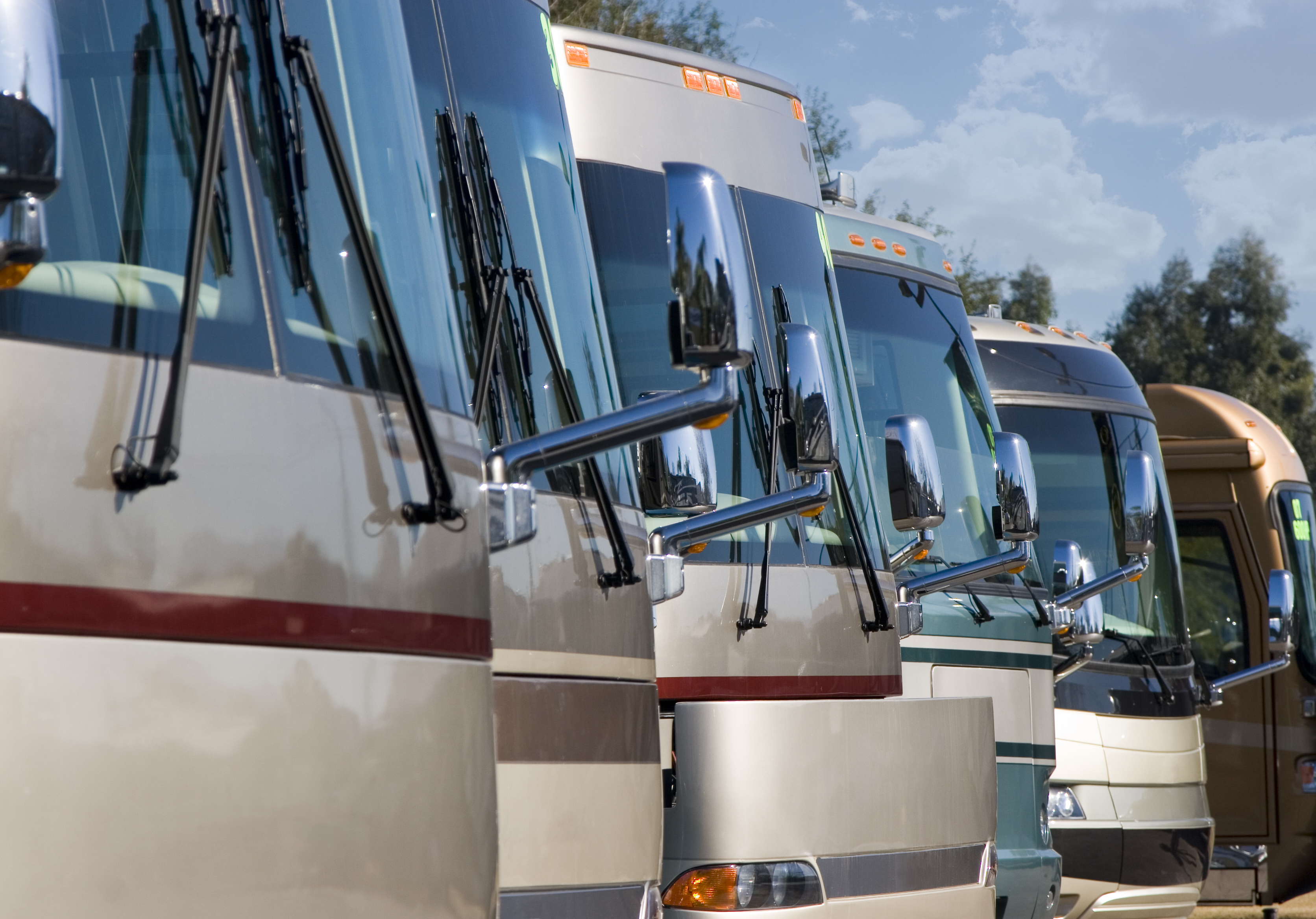
1. RVs are really expensive
Much of the core appeal of the RV-retirement lifestyle is the perception that an RV costs less than a house, or a “sticks and bricks” home, to use the lingo. But there’s a ton of “it depends” in that equation, and an RV that suits your needs can be a big investment. Before you can even set a budget, you need to understand the different options on the market. A quick primer:
Class A motorhome: These are based on commercial truck chassis and all the bodywork is by the RV maker. You won’t see a Ford or Ram front end here. While not all Class A motorhomes are large, the biggest, most expensive motorhomes are all Class A. On average, Class A motorhomes cost $100,000 to $600,000 but can reach seven figures.
Class B motorhome: That’s the technical term, but it’s rarely used. Owners will refer to their van, or maybe their “Sprinter” (technically a Mercedes model that gets applied generically). While these might be heavily modified, they’re no wider or longer than a factory van that provides their chassis and body shell (though they might be taller), and this makes them popular among travelers who emphasize traveling, whether in urban centers or even off-road. On average, Class B motorhomes cost $80,000 to $200,000.
Class C motorhome: Generally the most affordable of the motorized options, though some can rival Class A in their fitments. Like Class A, these motorhomes are built on commercial chassis, but unlike Class A, they retain the factory cab. So, the driving experience — in particular, your actual view out — is more like piloting a pickup truck. Class C motorhomes cost $50,000 to $200,000 on average.
Trailers: The cheapest entry to RV living is to buy a trailer of some sort. A folding trailer, sometimes called a pop-up trailer, can cost as little as $6,000 and go as high as $30,000, according to pricing estimates from both the RV Industry Association and Consumer Reports. Conventional travel trailers (a hard shell all the way around) range between $20,000 and $50,000, depending on size and amenities. Of course, as trailer size goes up, so does the need for a capable vehicle to tow it. The largest of these, fifth-wheel trailers, required a heavy-duty truck whose bed is modified to tow them and run from $30,000 to $100,000.
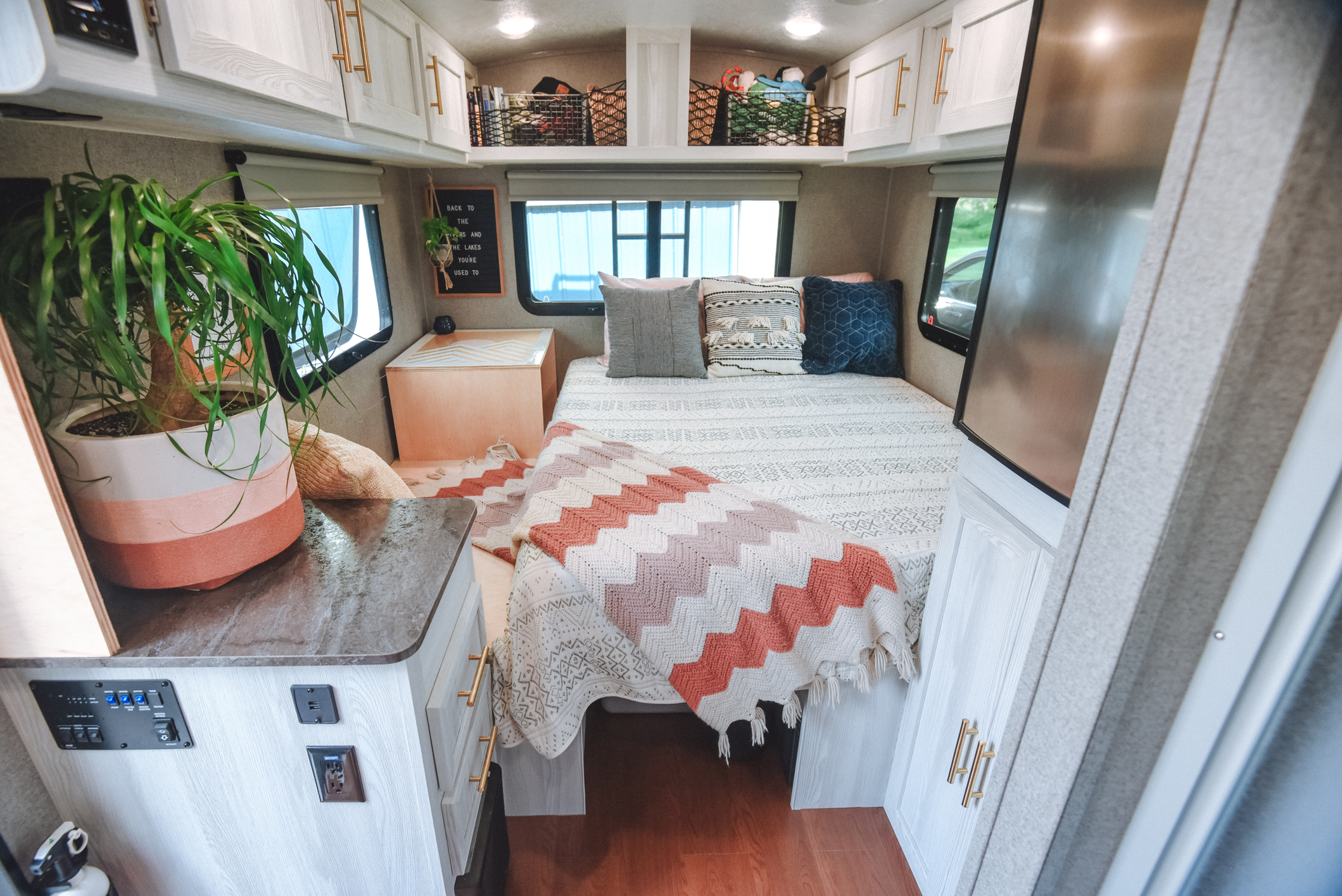
2. You’ll spend even more money updating your RV's décor
Your taste in decor can differ greatly from RV designers, so you may be spending some dough upgrading the interior living space. This can be especially true if you buy used, but even new RVs can demand immediate upgrades to suit your taste.
RVer Charley Hannagan, whose home base is Pittsburgh, described the interior of her family’s used 32-foot Jayco Precept Class A motorhome as looking like “a 1970s old-age home.”
“It was awful,” she says. “We spent about $2,000 to buy fabric to re-cover the furniture in fabric I liked, to buy melamine dishes that won’t break on the road, organizational stuff and sheepskin covers for the front seats.”
The Bakers redecorated, too. They replaced the mattress on the bed with one of a better quality for $900. Also inside, they changed out televisions, curtains and blinds ($8,000), added a home-grade refrigerator ($350), and bought new recliners and table chairs ($2,000).
Then there’s the outside. What RVs are made of varies, but with the exceptions of the Class B vans and aluminum Airstream trailers (and their imitators), it’s generally not formed and welded metal like a car. Siding, whether aluminum or fiberglass or some other composite, is more common. That was the case for the Bakers, who paid north of $20,000 to have their entire unit resided and repainted.
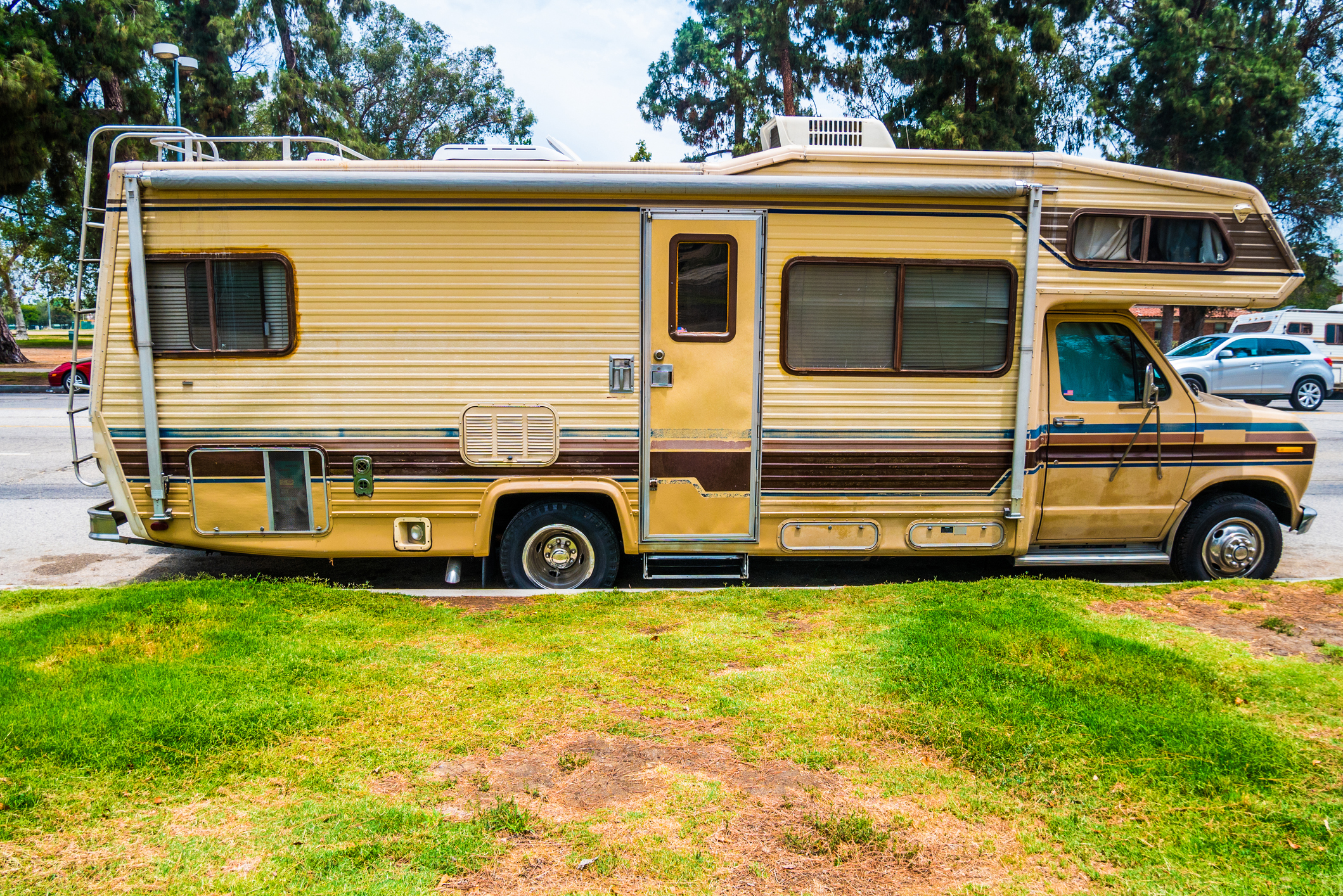
3. Your RV will depreciate in value
You might call it your home but don’t expect your RV to increase in value over time like most traditional “sticks and bricks” houses do.
“With RVs ranging in price from $60,000 to $600,000, it’s hard to compare them to a home that’s paid off or near being paid off and find financial benefit,” says Margo Armstrong, who previously RVed for over two decades and wrote the RV blog Moving On With Margo. “RVs also depreciate rapidly; when you add in costs for gas, insurance, upkeep, food and the many other expenses of being on the road, traditional vacationing will likely seem to be a better value for your money.”
There are exceptions: As with cars, there is a market for high-end, collectible RVs and trailers (again, think Airstream). But the cost of admission to this club is high and as with most collectibles, the wear and tear of everyday use can severely limit price appreciation. Do you really want to break into a sweat every time a branch brushes against your roof?

4. RVs guzzle fuel
Even with gas prices lower, you'll still want to think long and hard about what it’s going to take to fill your RV for rolling down the highway. Are you prepared for triple-figure fill-ups? Gas mileage in the single digits? Pushing a house through the air at 60 mph takes a lot of power, and power takes fuel. Plus, the biggest and fanciest of RVs often take diesel fuel, and while a diesel rig can be more efficient, the gap between gasoline and pricier diesel has been growing.
“The price of fuel has certainly impacted our adventures,” said Nancy Fasoldt, who lives in upstate New York when not RVing. “We’ll winter in mid-Florida instead of South Padre Island, Texas because it is closer. And we are planning summer excursions nearer than farther from home. And we flew to Seattle to see the kids instead of driving. Sad to say, it was cheaper to fly first class than to drive the truck camper.”
According to AAA, the current national average gas price is $3.069 for regular gasoline, $3.901 for premium and $3.542 for diesel. If you're looking to cut costs next time you hit the road, check out these gas-saving tips that actually work.
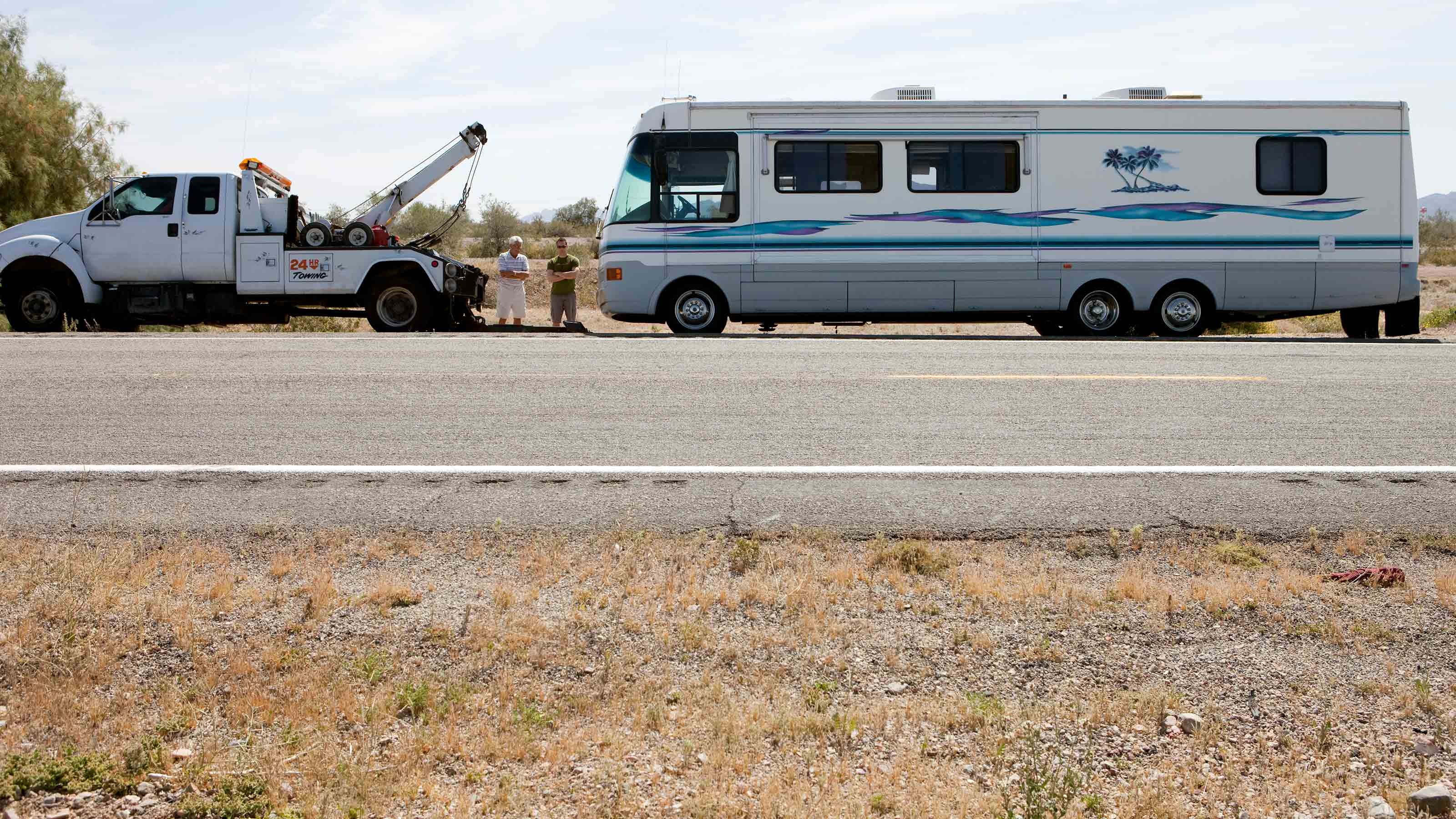
5. You'll need extra insurance for your RV
Your car insurance policy will likely extend its liability coverage for a trailer you haul behind your vehicle (you should absolutely check), but that’s a bare minimum and does nothing to protect the trailer’s value from loss.
Your insurance needs can quickly escalate, especially if you travel extensively or buy something beyond a trailer. Keep in mind, too, that an RV is bigger than a car and more challenging to drive (we’ll get to the gory details), making accidents, both big and small, more likely and potentially more costly.
A standard RV insurance policy will cover many of the same things as a standard auto policy:
- Liability insurance (if you hurt someone else or damage their property)
- Comprehensive auto insurance (theft, vandalism, acts of nature, deer strikes, etc.)
- Collision insurance (damage to your RV if you’re in an auto accident)
- Uninsured/underinsured coverage (damage to your RV or your injuries if the other driver doesn’t have any or enough insurance)
- Medical coverage (medical bills for you or your passengers resulting from an accident)
In addition, insurers have add-on insurance for RVs. Costs will vary widely based on where you live, your driving record, what kind of RV you own and how much time you spend in it. The Hannagans, for example, say they paid about $1,700 a year at one point to insure their motorhome and the Mini Cooper they tow behind it. According to HomeGuide, the average RV policy ranges from $500 to $1,500 per year. Many RV owners, according to Progressive, seek coverage that includes:
- Total loss replacement. This will replace your new RV with a comparable new RV (no depreciation applied) if you experience a total loss within a specified time frame, typically five years.
- Replacement cost personal effects. This covers your personal belongings inside your RV (and sometimes outside) if damaged, destroyed or stolen.
- Vacation/campsite liability. This covers injuries and property damage when you’re traveling and living in your parked RV for extended periods.
- Emergency expenses. This pays for lodging and transportation if your RV is out of commission due to a covered accident. Particularly important if you’ve ditched “sticks and bricks” to live in your RV.
Depending on your age, you could receive special discounts that can help reduce your premiums. Check out these eight ways seniors can save on car insurance.

6. Health care can be a hassle when traveling in an RV
Being on the road in an RV can mean being far away from your regular doctors and your insurer’s network of medical providers and facilities.
“Health insurance is the problem, not health care,” says retiree Nancy Fasoldt. “There are doctors everywhere, but the cost can kill you because of the insurance. HMOs, PPOs, in-network, out-of-network. Geesh. If you are in Bayfield, Wis., and need stitches, you can go to urgent care for treatment, but where to go for follow-up care that is in-network?”
Baker notes, “If you are pre-Medicare, health insurance is a nightmare as most plans are state-specific. Luckily, Laura and I are on Medicare and we get coverage in any state, choose any doctor who offers Medicare. However, for supplemental plans (Parts F and G) we pay an additional $400 on top of our Social Security-Medicare payments of $290.”
Turning 65 and going on Medicare doesn’t eliminate these challenges, points out insurer The Hartford: “Retirees who are already on Medicare Parts A and B will be able to receive hospital and medical care in case of a major illness. If you are on a Medicare Part C (Medicare Advantage) plan, however, it may not cover you for anything other than emergency or urgent care, since your plan may specify that you are not allowed to see providers outside of your network."
As for prescription medication, Fasoldt recommends making sure that Walmart pharmacies are in-network in your plan, “because Walmarts are everywhere.” She also recommends asking your insurer for a vacation override if you’re ever on the road and need a refill fast from the nearest pharmacy.

7. You'll have to deal with your own waste from your RV
Unless there’s a plumbing emergency, you probably think little about where the water comes from and where the waste goes when you turn on the faucet or flush the toilet in your sticks-and-bricks home. With an RV, it’s always front of mind.
Basically, your RV is equipped with a black tank for sewage, a gray tank for shower and sink water, and a freshwater tank. You must monitor the levels in all of these. You also have to schedule regular, er, dumps — of the waste tanks.
To that end, many locales that once offered dumping stations for RVs, such as highway rest stops and campgrounds, are doing away with the service (or charging more money). Need help finding a dump station? There’s an app for that.
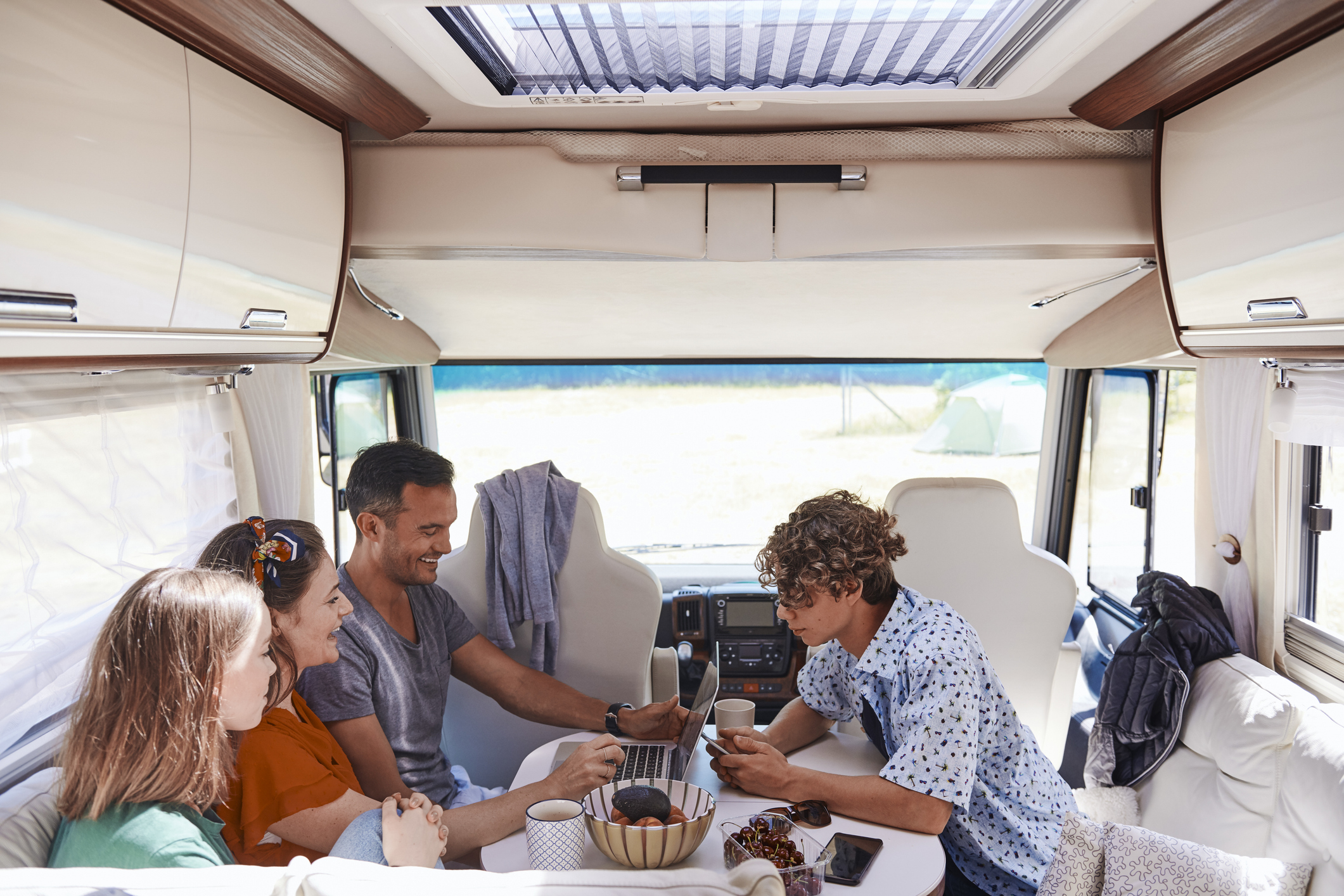
8. Quarters are close in your RV
Even in the largest of motorhomes, your traveling companion is never more than a few feet away. If you require plenty of space, privacy and solitude, the RV life might not be for you. Some traveling partners sort it out by doing certain tasks — laundry, grocery shopping — solo.
Says Nancy Fasoldt: “Honestly, we never found the closeness to be problematic. Others have told us they have. But we keep busy reading, writing, painting, bike riding, walking the dogs. And, if necessary, we can pull a curtain to hide behind. We seriously like each other most of the time, so it’s not hard to be that close.”
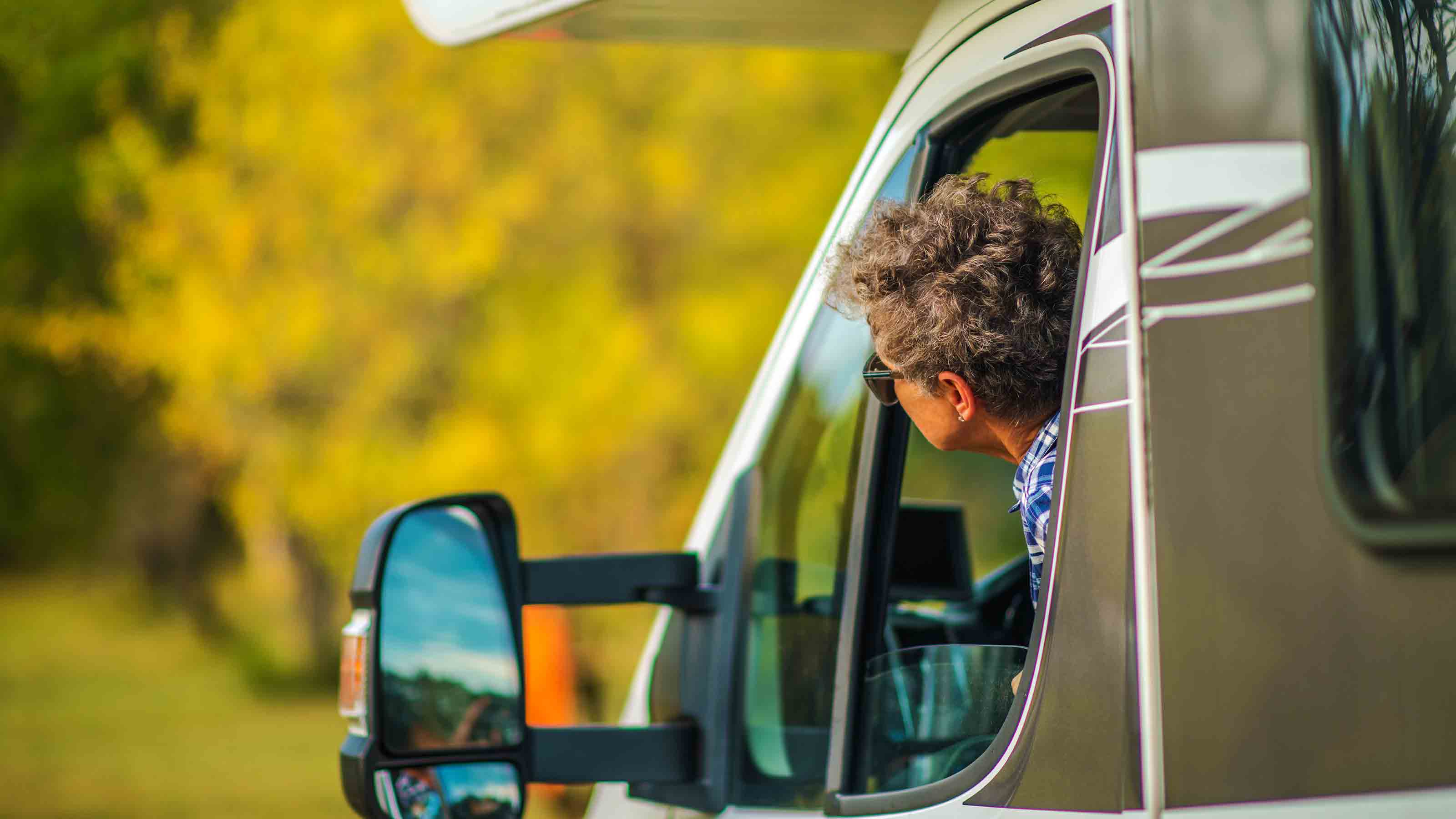
9. RVs are a bear to drive
Even the most nimble of RVs — the Class B vans — require some adjustment for most drivers. The blind spots are massive and rearward vision is generally a function of mirrors and cameras. You’ll need a trucker’s appreciation for clearance limits (GPS navigation can help here). Rest stops, left turns and (maybe just don’t do these) U-turns need to be carefully planned.
With size comes greater difficulty, but attempting to dodge that bullet by sticking to a trailer is not without its own problems — chiefly backing up. Crosswinds are also no fun, especially with a hard-shell trailer. Either way, be prepared for a steep learning curve before you’re comfortable sitting behind the wheel of a 40-foot motorhome or hauling around a full-size fifth-wheel trailer.
The dealer will give you a basic introduction to your RV when they hand over the keys, but you’ll want some practical experience under your belt before you hit the road. Search online for RV driving schools in your area, or ask for referrals for instructors from the dealership or RV parks and campgrounds staff. Or, ask experienced RVers where they learned to drive.
Even if only one of you plans on taking the wheel, your traveling partner should also learn how to drive the RV in a pinch in case you become tired or ill. We saw RV classes ranging from $325 for an RV backing class to $895 for a two-day driving class for two people.
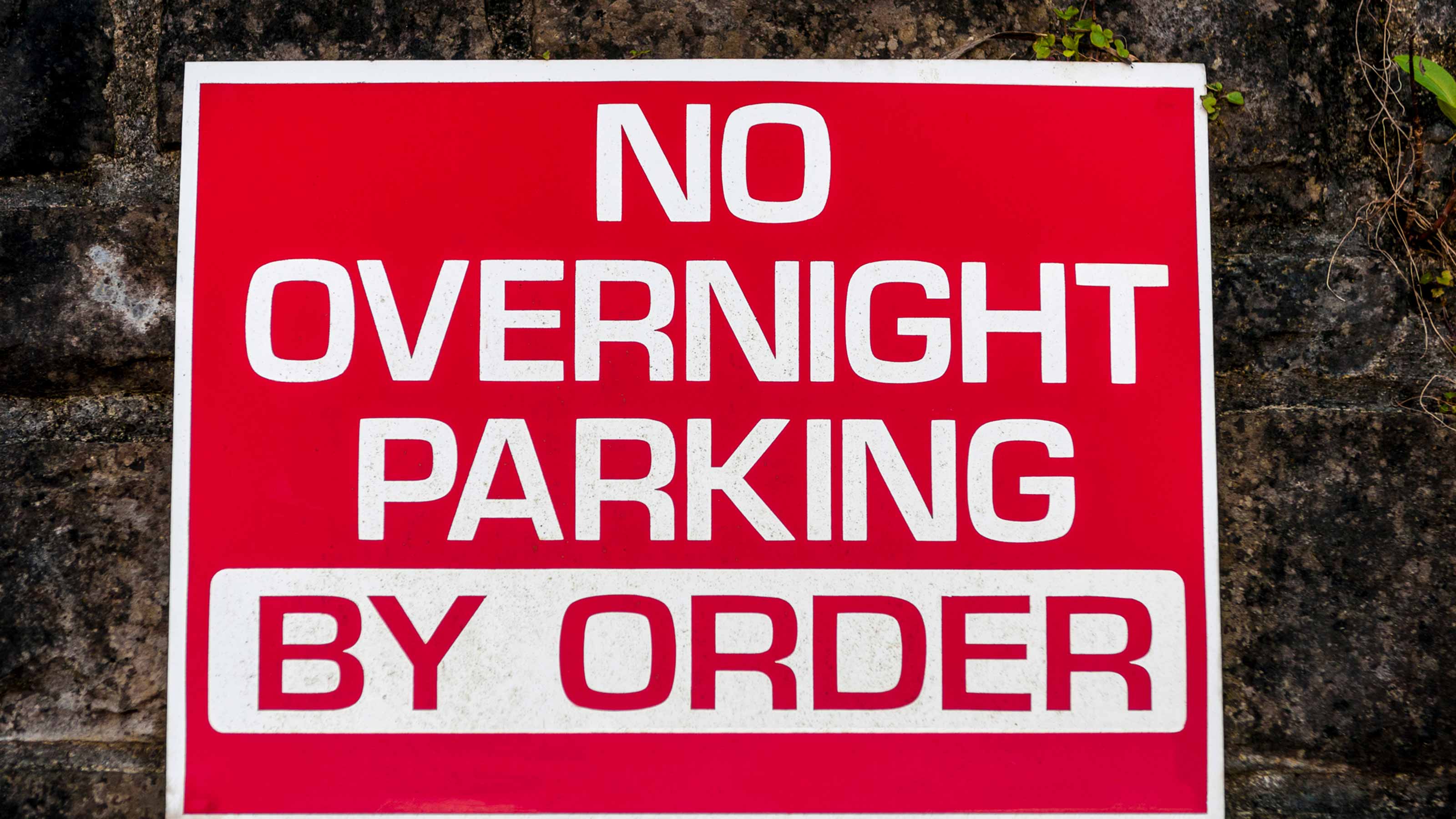
10. Overnight parking can be problematic with an RV
If just stopping to stretch your legs requires forethought, you’d better believe you’ll need to figure out where you’ll park your RV each and every night along the way. The #vanlife people with their Class B vans seem to thrive on finding public land places where they can park for free (yes, there are apps for that, too), but if you’re driving something bigger, want hookups or a bathroom with porcelain fixtures, don’t expect to live too spontaneously.
Aside from RV parks and campgrounds where you can reserve a spot in advance, Walmart, Cracker Barrel, Lowes and Home Depot parking lots have been popular for overnighting in your RV. However, Nancy Fasoldt recommends calling ahead to ask the store manager for permission and specific instructions on where to park in the lot. Fasoldt says they’ve also had luck overnighting at Cabela’s sporting goods megastores. Some truck stops, rest stops and state visitor centers allow RVs, as do some museums, casinos and other tourist attractions.
An example of rest stops: You can park your RV at select rest areas on the Ohio Turnpike, for one night only (bad news for all of you longing to vacation at an Ohio Turnpike rest stop). It will set you back $20, but includes electrical outlets, a wastewater dump station and potable water filling station. They’re available on a first-come, first-serve basis.
“Our favorite overnight stops are at Elks Lodges,” says Geoff Baker. “I am a member in Gillette, Wy., and we can stay at Elks Lodges around the country that offer RV parking — often free, and up to $25 per night donation for water and electric service.”
The Bakers are down on the Walmart option, though. “Too noisy, and not as secure as it used to be,” said Baker.
Technology helps the Fasoldts find places to park overnight. Free websites they use include Casino Camper, FreeCampsites.net and Harvest Hosts, the latter of which matches RVers with willing wineries, breweries and farms. “The catch is they want our business,” says Nancy Fasoldt. They also use the Allstays Camp and RV app.
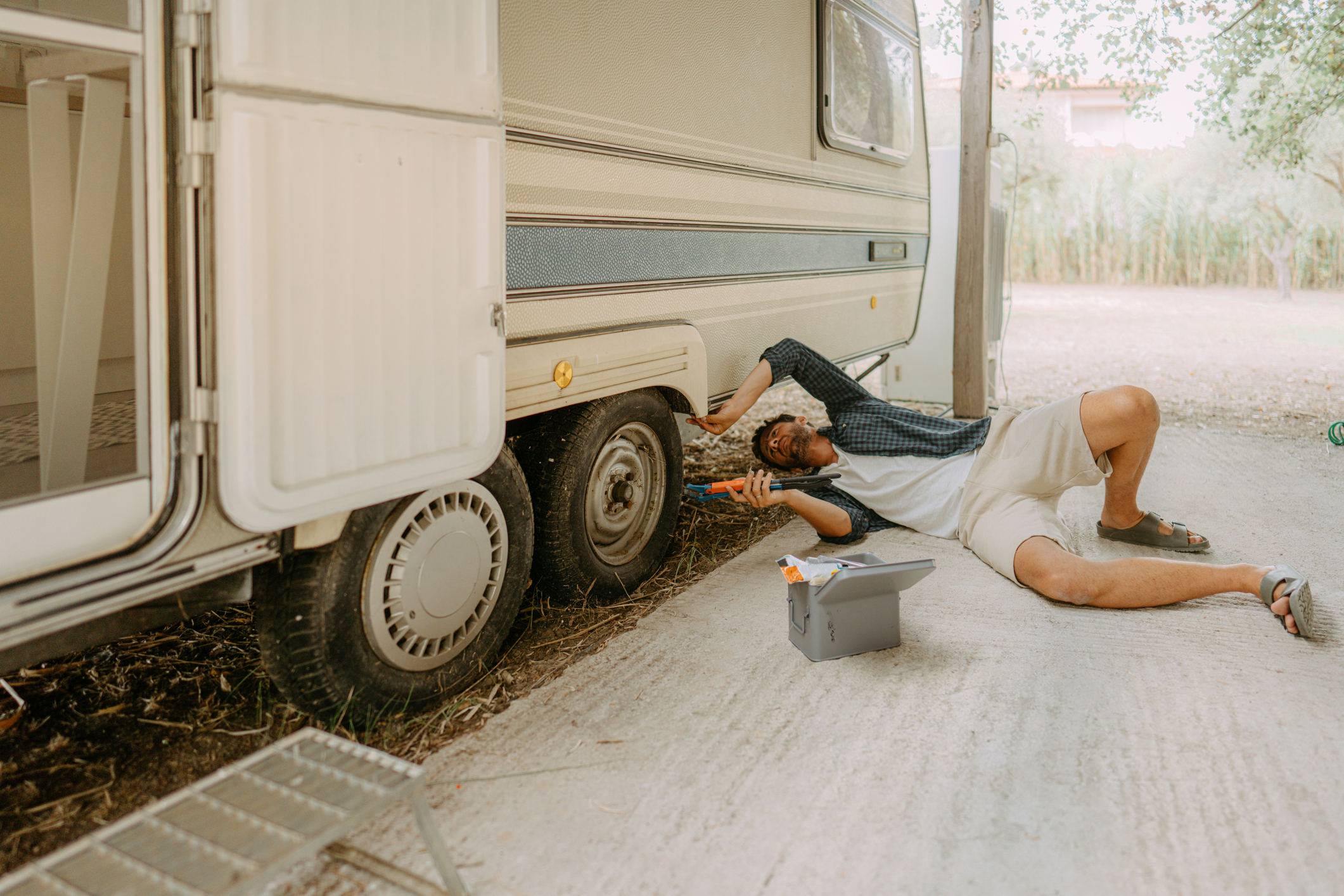
11. RV repairs can be costly
As with a car, an RV requires routine maintenance and on occasion, even breaks down. But remember, it’s also a house, with the added burdens of water and waste tanks to watch, propane levels to monitor and appliances to go on the fritz.
“Much like your house, where you’ll have somebody take a look at the furnace every season, you still have those kinds of issues with an RV,” says Phil Ingrassia, president of the RV Dealers Association. “People need to consider the maintenance that needs to be done to keep their RV ready to go when they want to go on vacation. There’s nothing worse than you’re all ready to go with a family camping, and then something’s wrong. So you need to do that maintenance much like you have to do with a home.”
The Hannagans have experience with repairs. Getting repairs done can be complicated, adds Hannagan. While their RV dealer will fix things in the living area, it doesn’t work on the engine and chassis. For that, they need to find a Ford dealer that repairs truck engines and has the room in its garage to fit a 32-foot motorhome. “It’s difficult to get your rig into a dealer,” she says.
Hannagan suggests dedicating a savings account to RV upkeep and repair. Several years ago, she said, "We expect to spend about $5,000 to replace tires, install new brakes and other repairs. RVing is not for the faint of heart.
”For roadside assistance, the Fasoldts rely on CoachNet. “It is like AAA on amphetamines,” says Nancy Fasoldt. A one-year membership costs $179 for trailers and fifth wheels and $249 for motorhomes.

12. You’ll need to get rid of a lot of your stuff
Meemaw’s hutch and your trusty table saw won’t be able to come along on this ride. That can bother people who have attachments, sentimental and otherwise, to certain belongings. Unless you can find a kindly relative, it costs to store these items.
Seasoned RVers, especially full-timers, know you’ll need to cull clothes and cut down hard on clutter — and not acquire more, even if you’re traveling through a world full of yard sales.
But before you donate all your belongings to your local thrift store, make sure you're not holding on to one of these ten old things in your home that could be worth a fortune.

13. The freedom of the open road isn’t free — and it’s crowded
Common complaints from RVers center on climbing rental rates at campgrounds, crowds at campgrounds and the growing likelihood they’ll be shut out or time-restricted at RV parks. Let’s look at the national parks alone. In 2023, 400 national parks reported 325.5 million recreation visits, according to the National Park Service. That was 13 million more than in 2022.
“Seriously, getting into a state or national park campground has become darn near impossible unless you are willing to play a game of chance, counting back the days AND HOURS before the spots are opened for reservations, then going online at a certain time of day and hitting refresh until the site open for reservations,” said Fasoldt. “Then it becomes a game of chance so see whose computer logged in faster.”
And if you do succeed in winning the site lottery, you’ll need to stick by your reservation, which includes showing up on the first day of your slot and not counting on extending your stay. The next camper is right behind you.
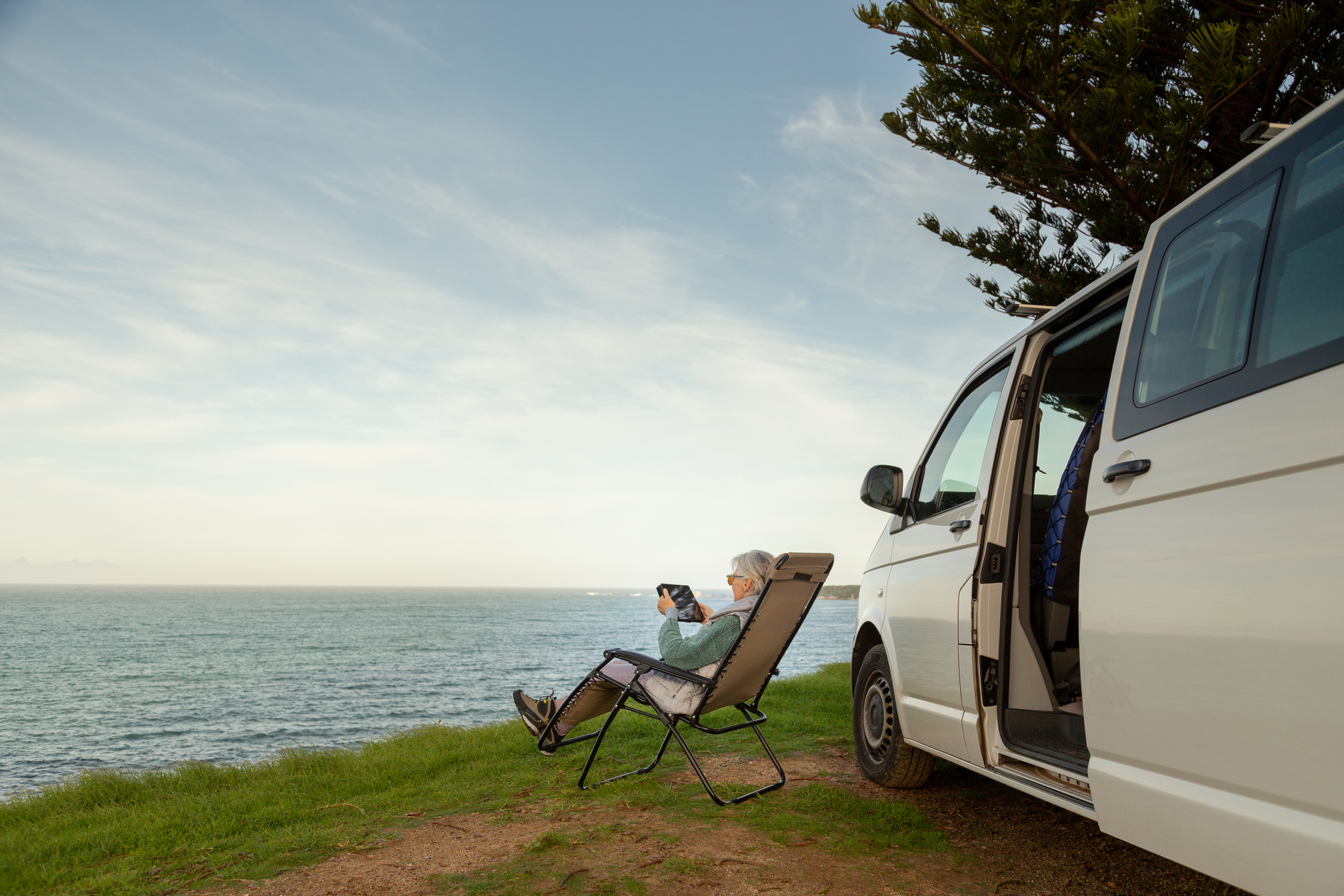
14. It can get lonely on the road in an RV
Spending much or all of your time in retirement in an RV means pulling up roots and moving from place to place. The lifestyle doesn’t work for those who desire close proximity to friends, family and familiar surroundings.
“I like escaping,” says Allen Fasoldt. “But it’s often nice to spend time with relatives. Trouble is, if you go RVing to get away, you are trying to get away.”
Adds Nancy Fasoldt: “Because we travel so much, our friends have gotten used to us not being there, so we’ve been slowly written off invite lists, no longer on speed dial. I look at myself as being a part-time person. Part-time here, part-time there. While fellow travelers make fast friends, it is only temporary, while we are in each other’s sphere. I do miss what I used to have in my home community.”
And loneliness can have negative impacts on your overall wellbeing. Loneliness is linked to a slew of health issues, ranging from heart disease, stroke, depression, dementia and even premature death, according to the Centers for Disease Control and Prevention (CDC). Learn more about the cost of loneliness in retirement, and how you can combat it.

15. An airbnb for RVs? You might want to try before you buy
You wouldn’t buy a home and move to a city sight unseen, yes? It’s probably not a good idea to sell your home and buy an RV before a practice run or two in whatever size motorhome (or towable) you’re eyeing. That experience — renting an RV for a vacation — soured a friend of mine on the whole retiring-in-a-recreational-vehicle jam.
Many RV dealers have rental vehicles, too. If there’s not one near you, you can find rentals across the country on several websites, including Outdoorsy and RVshare. Another, RVezy, calls itself “the Airbnb of RVs,” and it features RVs from private owners from around the country. Those rigs include towables, motorhomes, pet-friendly RVs, deliverable RVs and stationary RVs.I
t’ll cost you some, though; modest per-night rates don't usually reflect a bevy of fees. We looked at top RVezy rentals near Sacramento, Calif., a popular rental city for RVezy. This 2023 Wildwood X-Lite travel trailer (sleeps 9), for two nights in October, will cost you about $516 once all the fees are baked in — but remember you'll need to bring something to pull it with. A Forester Class C RV for two nights costs around $552. And this is before gas, food, propane and the fees for wherever you’re going to park.







